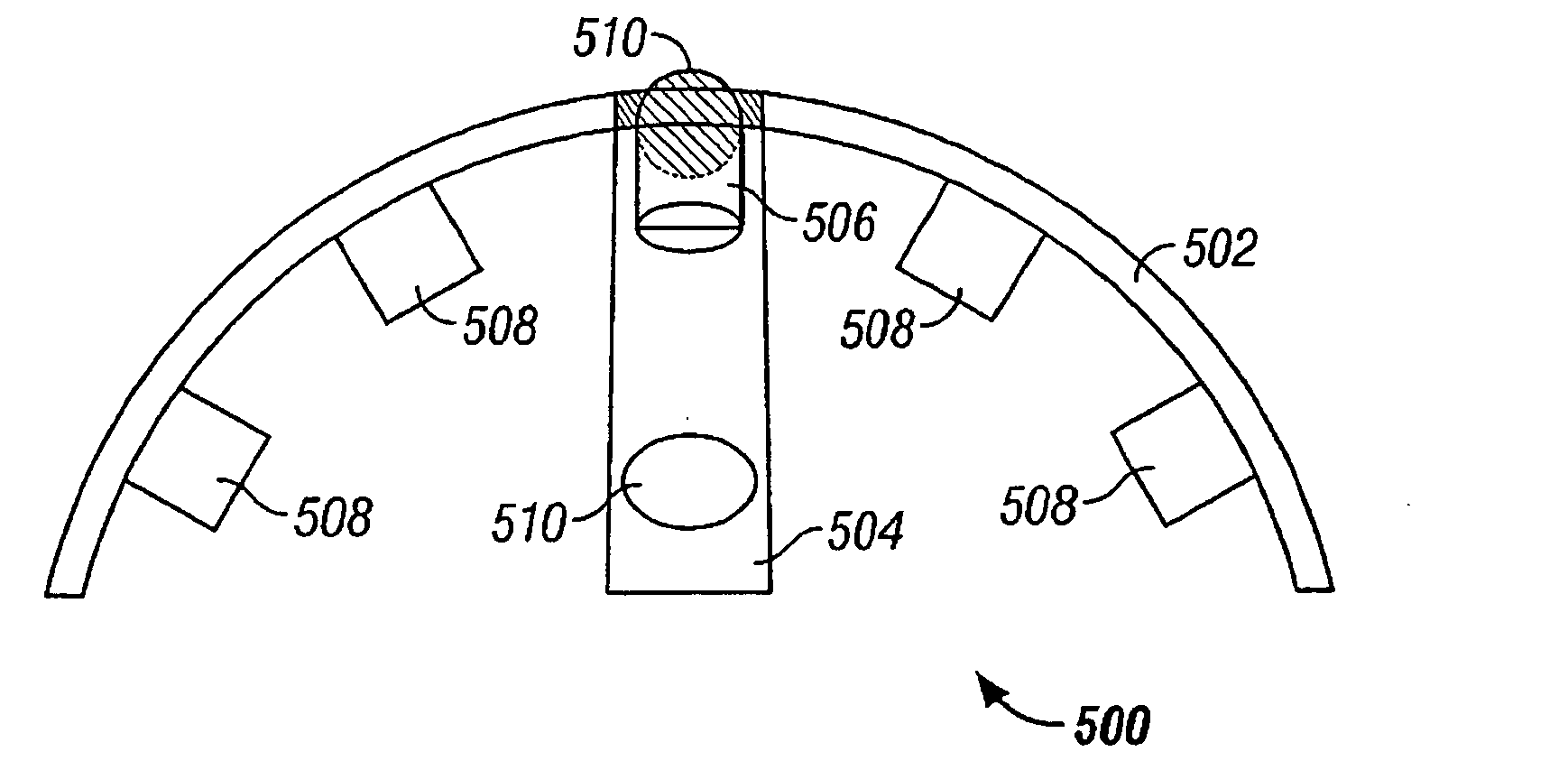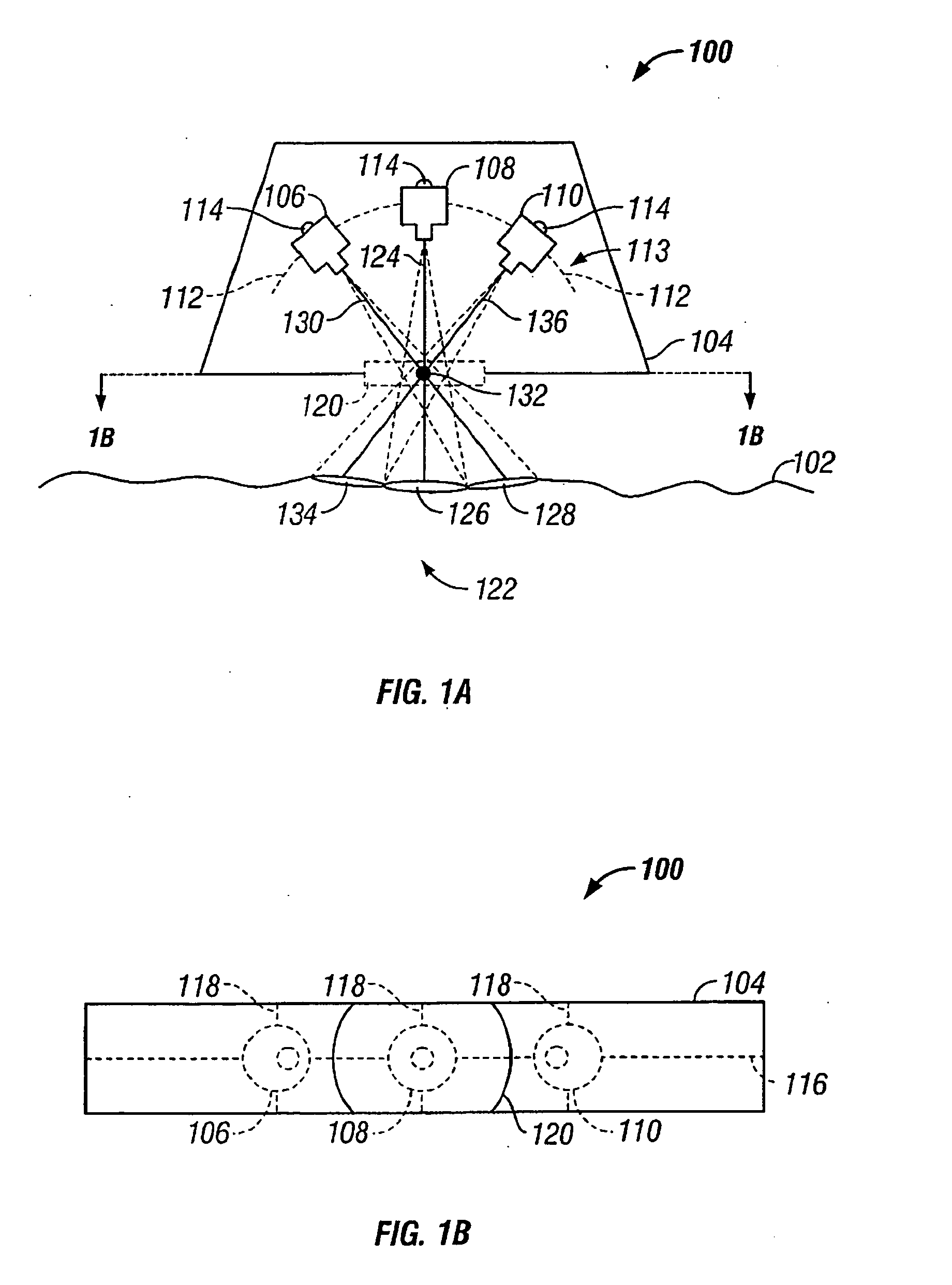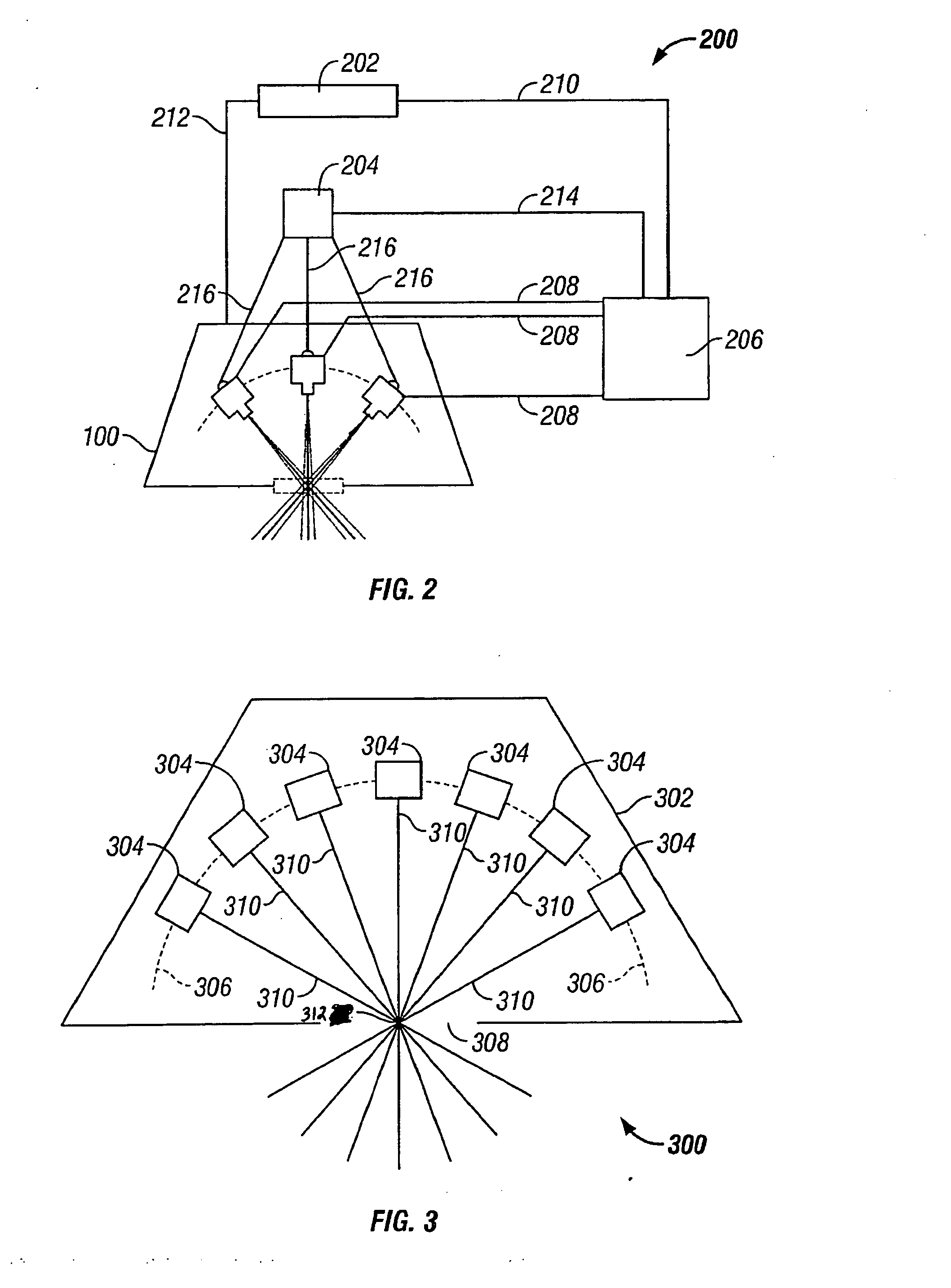Retinal concave array compound camera system
a compound camera and concave array technology, applied in the field of remote imaging techniques, can solve the problems of large scale factor, ineffective system, and challenge even the most robust imaging system, and achieve the effect of small image distortion and wide collective fov of the target area
- Summary
- Abstract
- Description
- Claims
- Application Information
AI Technical Summary
Benefits of technology
Problems solved by technology
Method used
Image
Examples
Embodiment Construction
[0027]While the making and using of various embodiments of the present invention are discussed in detail below, it should be appreciated that the present invention provides many applicable inventive concepts, which can be embodied in a wide variety of specific contexts. The specific embodiments discussed herein are merely illustrative of specific ways to make and use the invention and do not limit the scope of the invention.
[0028]The preferred embodiment of the present invention provides an imaging system having a compound array of imaging sensors disposed such that their focal axes converge, intersect, and thereafter diverge. Individual imaging sensors can be disposed within a host craft in a concave or retinal configuration, with non-coinciding lines of sight. Depending upon the configuration of the host craft, a small aperture, portal or iris may be formed in the craft, and the array positioned in relation to the aperture, portal or iris, such that the point of intersection of th...
PUM
 Login to View More
Login to View More Abstract
Description
Claims
Application Information
 Login to View More
Login to View More - R&D
- Intellectual Property
- Life Sciences
- Materials
- Tech Scout
- Unparalleled Data Quality
- Higher Quality Content
- 60% Fewer Hallucinations
Browse by: Latest US Patents, China's latest patents, Technical Efficacy Thesaurus, Application Domain, Technology Topic, Popular Technical Reports.
© 2025 PatSnap. All rights reserved.Legal|Privacy policy|Modern Slavery Act Transparency Statement|Sitemap|About US| Contact US: help@patsnap.com



